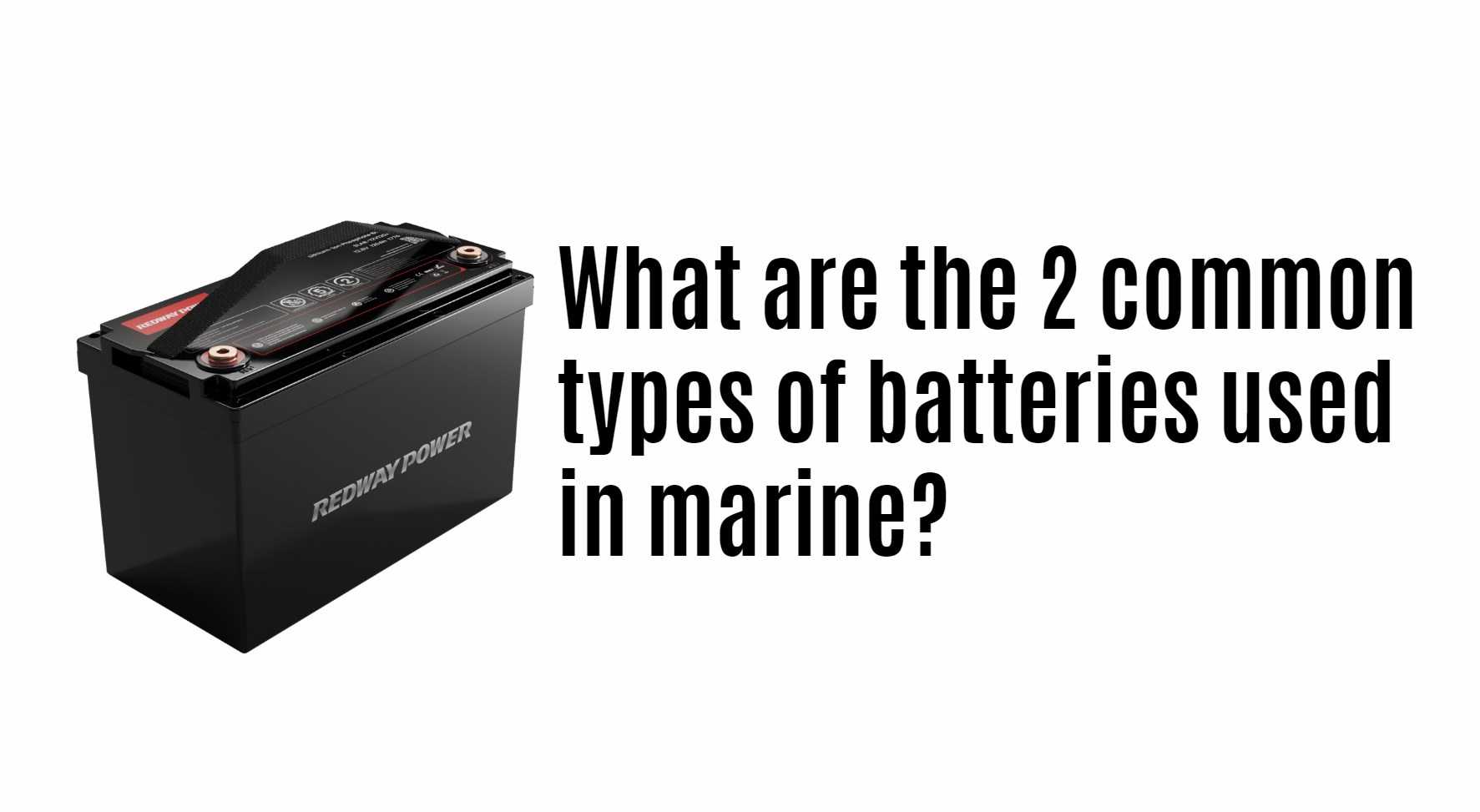What Are the 2 Common Types of Batteries Used in Marine?
The two common types of batteries used in marine applications are lead-acid batteries and lithium-ion batteries. Lead-acid batteries, including flooded and AGM types, are traditional choices due to their affordability and reliability. Lithium-ion batteries, particularly lithium iron phosphate (LiFePO4), are gaining popularity for their lightweight design and longer lifespan.
Understanding Marine Battery Types
Marine batteries are essential for powering various onboard systems, including navigation, lighting, and communication equipment. Choosing the right battery type is crucial for ensuring reliable performance and safety while at sea.
1. Lead-Acid Batteries
Lead-acid batteries have been the standard choice for marine applications for many years. They come in two primary forms:
- Flooded Lead-Acid Batteries: These require regular maintenance, including checking electrolyte levels. They are robust and cost-effective but can be sensitive to deep discharges.
- AGM (Absorbent Glass Mat) Batteries: Sealed and maintenance-free, AGM batteries are designed to withstand vibrations and can be mounted in any orientation. They offer better performance than flooded batteries but at a higher cost.
| Type | Characteristics | Advantages | Disadvantages |
|---|---|---|---|
| Flooded Lead-Acid | Requires maintenance | Cost-effective | Shorter lifespan |
| AGM | Sealed, maintenance-free | Vibration-resistant | More expensive than flooded lead-acid |
2. Lithium-Ion Batteries
Lithium-ion batteries, particularly lithium iron phosphate (LiFePO4), are becoming increasingly popular in marine applications due to their numerous advantages:
- Lightweight: Lithium batteries are significantly lighter than lead-acid options, making them ideal for weight-sensitive applications.
- Longer Lifespan: They typically last longer than lead-acid batteries, often exceeding 2,000 cycles at 80% depth of discharge.
- Higher Efficiency: Lithium batteries can be discharged more deeply without damage, providing more usable energy.
| Type | Characteristics | Advantages | Disadvantages |
|---|---|---|---|
| Lithium-Ion (LiFePO4) | Lightweight, high energy density | Long lifespan, deep discharge capability | Higher initial cost |
Performance Comparison
When comparing lead-acid and lithium-ion batteries for marine use, several performance metrics should be considered:
- Lifespan: Lithium-ion batteries generally have a lifespan of 10 years or more, while lead-acid batteries typically last between 3 to 5 years.
- Energy Density: Lithium-ion batteries have a higher energy density, meaning they can store more energy in a smaller space compared to lead-acid batteries.
- Depth of Discharge (DoD): Lithium-ion batteries can safely discharge up to 80-90%, while lead-acid batteries should not be discharged below 50% to avoid damage.
| Performance Metric | Lead-Acid | Lithium-Ion |
|---|---|---|
| Lifespan | 3 – 5 years | 10+ years |
| Energy Density | Lower | Higher |
| Depth of Discharge | 50% | 80 – 90% |
Best Practices for Marine Battery Use
To ensure optimal performance and longevity of marine batteries, consider these best practices:
- Regular Maintenance: For flooded lead-acid batteries, check electrolyte levels regularly and clean terminals to prevent corrosion.
- Monitor Voltage Levels: Regularly check voltage levels to ensure they remain within safe operating limits.
- Use Quality Chargers: Always use chargers designed specifically for your battery type to ensure proper charging cycles.
- Store Properly: If not in use for extended periods, store the battery in a cool, dry place.
| Best Practice | Description |
|---|---|
| Regular Maintenance | Check levels and maintain |
| Monitor Voltage Levels | Ensure safe operating limits |
| Use Quality Chargers | Ensures proper charging |
| Store Properly | Protects against deterioration |
Latest News
Recent advancements in marine battery technology have highlighted key trends relevant to battery use on boats:
- The adoption of lithium-ion technology is increasing as boaters seek lighter and more efficient power solutions.
- Innovations in battery management systems (BMS) are enhancing safety features and performance monitoring capabilities.
- Regulatory changes are encouraging manufacturers to produce more sustainable and environmentally friendly battery options.
Redway Expert Comment
At Redway Battery, we recognize that selecting the right battery type is essential for optimal performance in marine applications. Our lithium LiFePO4 solutions provide superior longevity and efficiency compared to traditional lead-acid options. We are committed to delivering high-quality products tailored to meet diverse energy needs on the water.”
Top Competitors in Battery Market
Here is a comparative chart showcasing five leading manufacturers of marine batteries:
| Brand | Battery Type Options | Price Range |
|---|---|---|
| Redway Power | Lithium LiFePO4 | $200 – $800 |
| Trojan Battery | Flooded Lead-Acid | $200 – $600 |
| Optima Batteries | AGM & Lead-Acid | $250 – $400 |
| Interstate Batteries | Lead-Acid | $150 – $350 |
| VMAXTANKS | AGM & Lithium | $250 – $500 |
Conclusion
In conclusion, both lead-acid and lithium-ion batteries have their advantages in marine applications. While lead-acid batteries offer affordability and reliability, lithium-ion options provide superior performance and longevity. By understanding the characteristics of each type and following best practices, users can make informed decisions that enhance their boating experience.


